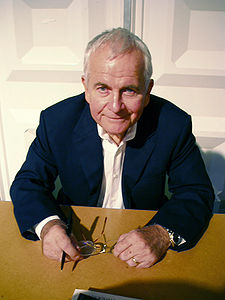The Madness of King George
The Madness of King George is a 1994 film directed by Nicholas Hytner and adapted by Alan Bennett from his own play, The Madness of George III. It tells the true story of George III of Great Britains deteriorating mental health, and his equally declining relationship with his eldest son, the Prince of Wales, particularly focusing on the period around the Regency Crisis of 178889. Modern medicine has suggested that the Kings symptoms were the result of acute intermittent porphyria, although this theory has more recently been vigorously challenged, most notably by a research project based at St Georges, University of London, which concluded that George III did actually suffer from mental illness after all. Filming of the movie took place fromJuly toSeptember 1994.
At first, the kings habits appear mildly eccentric, and are purposely ignored for reasons of state. The King is seen as being highly concerned with the wellbeing and productivity of England, and continually exhibits an encyclopedic knowledge of the families of even the most obscure royal appointments. In fact, the King is growing more unsettled, largely over the loss of America. George, his oldest son, aggravates the situation, knowing that he would be named regent in the event the King was found incapacitated. George chafes under his fathers repeated criticism, but also hopes for regency to allow him greater freedom to marry his Catholic mistress. George also knows that he has the moral support of Charles Fox who is eager to put across an agenda unlikely to pass under the current administration, including abolition of the slave trade and friendlier relations with America. Knowing that the Kings behavior is exacerbated in public, the Prince arranges for a concert playing the music of Handel. The King reacts as expected, interrupting the musicians, acting inappropriately towards Lady Pembroke, attendant to the Queen, and finally assaulting his son.The Kings madness is treated using the relatively primitive medical practices of the time, which include blistering and purges, led on particularly by the Prince of Wales personal physician, Dr. Warren. Eventually, Lady Pembroke recommends Dr. Willis, an exminister who attempts to cure the insane through new procedures, and who begins his restoration of the Kings mental state by enforcing a strict regime of strapping the King into a waistcoat and restraining him whenever he shows signs of his insanity or otherwise resists recovery. ........
Source: Wikipedia









